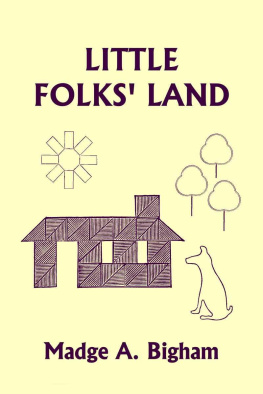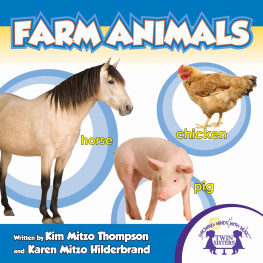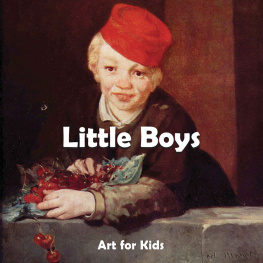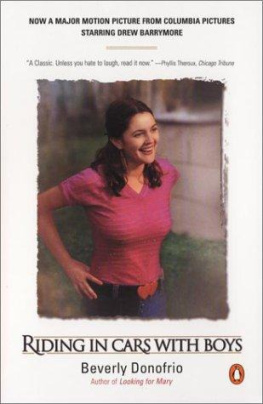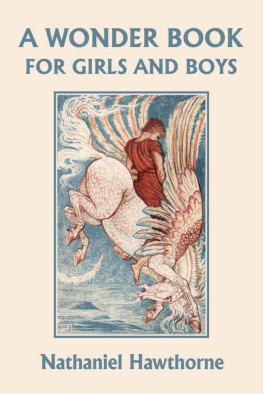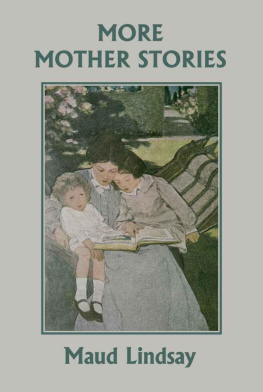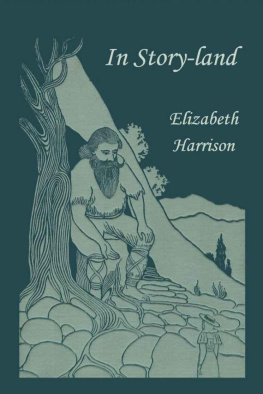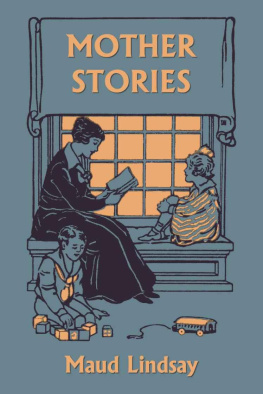Little Folks' Land
by
Madge A. Bigham
Yesterday's Classics
Chapel Hill, North Carolina
Cover and Arrangement 2010 Yesterday's Classics, LLC
All rights reserved. No part of this book may be reproduced or retransmitted in any form or by any means without the written permission of the publisher.
This edition, first published in 2010 by Yesterday's Classics, an imprint of Yesterday's Classics, LLC, is an unabridged republication of the work originally published by Mentzer, Bush & Company in 1907. This title is available in a print edition (ISBN 978-1-59915-375-9).
Yesterday's Classics, LLC
PO Box 3418
Chapel Hill, NC 27515
Yesterday's Classics
Yesterday's Classics republishes classic books for children from the golden age of children's literature, the era from 1880 to 1920. Many of our titles are offered in high-quality paperback editions, with text cast in modern easy-to-read type for today's readers. The illustrations from the original volumes are included except in those few cases where the quality of the original images is too low to make their reproduction feasible. Unless specified otherwise, color illustrations in the original volumes are rendered in black and white in our print editions.
The Preface
The story of Joe-Boy spun itself through the inspiration of a merry band of kindergarten children who held the leading string while the teacher followed and guided.
It was early in January that the author began the story to them, thinking that in about four weeks' work we would cover, through the principles of co-operation and interdependence, the building and furnishing of a house, thereby impressing on the child mind something of the true worth and dignity of labor as brought into actual contact with his everyday life.
When the wee house had been built, however, and completely furnished by eager and busy fingers, the children had become so interested in the Gipsy baby that they were unwilling to give him up.
Each morning the teacher was met with such questions as: "Will you tell us more about Joe-Boy to-day?" "Did he ever grow large enough to go to kindergarten?" "How many people helped to get his clothes?" "His food?" "Did Joe-Boy have any pets?"
And so each day there was some new question arising, showing that the children felt an incompleteness to leave the story just where we had plannedand justly so, since no life is complete that does not reflect its threefold relationship to Nature, God, and man.
They were instinctively reaching out for clearness in the complexities of life's relationships, in regard to themselves, through the Gipsy baby. His life was but the mirror reflecting their own life, and they were longing to solve it.
Thus days passed into weeks and weeks into months as we followed the Gipsy baby through the mineral, vegetable and animal kingdoms, and traced the laws of co-operation and interdependence, which weave all of life's relationships into one grand sweet song.
We little dreamed as we passed from subject to subject that the story would ever present itself in book form, but other kindergartners asked for the basis of the program, primary teachers asked for the use of the Nature stories, and even mothers wished to borrow them for bedtime use, so, through these interested suggestions, the book finally took shape.
Of course no kindergartner can follow with equal results another's plan of work, but the subject matter of this program is of such universal and vital interest that it can not fail to offer helpful suggestions. And that is all that any program can justly do. While the subject matter is given in daily program form, do not attempt to follow it literallytime, environment and adaptability are all to be considered, bearing in mind that the author began the use of the program in her own kindergarten early in January, hence the seasons fitted to the subject matter. Should you begin the use of the program in September, it would necessarily require a different line of progression. Perhaps the chief charm of the program is found in its ready adaptability. While the stories are all connected, they may be also separated, and used independently, omitted and added to, without destroying their value: e. g. , one teacher may wish to use only the division on domestic pets; another birds; another insects; and another plant life.
The interest of the children should be your guide as to how much or how little time should be spent on a given subject. Necessarily, environment will have much to do with the source of true interest, as was illustrated through one class of children in the study of birds. Long walks through beautiful woods, the finding of the real nest, seeing the real eggs, and the real birds, supplemented in the schoolroom by fine pictures in natural colors made the month of birds one of the happiest of all the topics, and the children, seemingly, would have spent a much longer time happily on the same subject, asking again and again about the fifteen birds made familiar to them through the stories.
The gift and occupation work throughout the book was planned by the pupils of the Atlanta Kindergarten Normal, of which Willette A. Allen is principal, and suggests how the plan was illustrated in one of the local kindergartens. Whenever possible, this work should be supplemented by other ideas and the use of new kindergarten material constantly being put on the market.
The songs were chosen from leading song books used in schools, and should also be changed to better ones when possible.
Such occasions of the school year as Easter, Thanksgiving, Christmas, Washington's Birthday, etc., were purposely omitted, so that teachers may present these celebrations as best suited to their respective environment and need.
Perhaps some prosaic people who do not live in childhood's fairy land, as I do, will wonder over the fact that the Gipsy parents were rather ideal for their origin. This may be true, but it seemed necessary to begin with such a family. And as they grew into the ideal, so we hope every Gipsy will do, some day.
Atlanta, Georgia
Contents
House Building
House Furnishing
Clothing
Fuel and Lights
Food
Civil Relationships
Domestic Pets
Animal Relationships
Bird Life
Plant Life
Life History of Butterfly
Vegetables
Flowers
Life History of the Bee
Life History of Ants
The Camping Trip
The Forest Home
O NCE-UPON-A-TIME there were two Gipsies.
They are people, you know, who travel about a great deal and like to sleep and eat in the woods, where they can be near the tall forest trees, the wild flowers, the rocks and moss and the sparkling waters. Gipsies do not like to live in houses like you and me. No, no indeed, they would much rather live in tents, which can be quickly packed up and moved with them from place to place. I can show you with my hands how they lookso.
Now, isn't that a queer little house? and do you think you would like to live in it?
Well, anyway, these two Gipsies I am telling you about liked it very much. Why, when Mrs. Gipsy wanted to cook dinner, she did not need a stove. She would make a fire under the trees near the creek, and then she would hang her pot over it, and boil all kinds of nice things to eat. Then when she and Mr. Gipsy wanted water to drink they would go to the cool spring, where the ferns grew thickest. They did not sleep in beds either, like you and me, but they would sleep on a pallet under the tent, or in fine weather swing a hammock under the trees and sleep in that. So you see how happy they were. But they were happier than ever at this time I am telling you about, because they knew a great big secret. Something was going to happen to them! You see, somebody told them they were soon to receive a wonderful presentone they had longed for ever so many timesand now if they were only willing to wait cheerfully, the present was really to be theirs.

